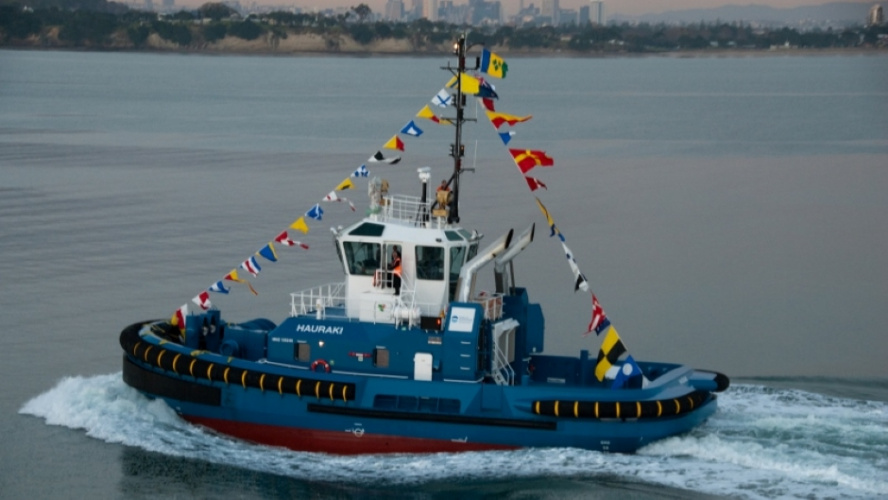Set for delivery in 2021, the Damen RSD-E Tug 2513 – built by Gorinchem, Netherlands-based Damen Shipyards - will have a 70-tonne bollard pull, which matches Hauraki, the port's strongest diesel tug.
At 24.73m long and with a 6m draft, the e-tug’s 2800kWh rated battery pack will drive two azimuth thrusters with 3m diameter propellers to help the vessel carry out the same tasks as Hauraki, which consumes 120 litres of diesel an hour.
"It was important to us that a new electric tug should be able to carry out normal port operations, just like our existing diesel tugs,” said Tony Gibson, CEO of Ports of Auckland. “Our new e-tug will be able to do three to four shipping moves on a full charge, or around three to four hours work.”
Based on the Hauraki’s 2019 diesel consumption (190,926 litres, equating to 514.33 tCO2e) and ship pulls, it is expected the e-tug will use around 501,685kWh to operate in the same way, which equates to 49.02 tCO2e and an annual saving of 465.31 tCO2e.

Auckland Mayor Phil Goff said, "The life of the tug is around 25 years. By going electric now, we save 25 years of diesel pollution and a net reduction in costs of around $2.5m because it is so much cheaper to operate."
For redundancy, the e-tug has two 1000kW back-up generator sets that will allow the vessel to operate at 40 tonnes bollard pull in the event of an electrical system failure.
According to Gibson, cost was a hurdle to commissioning the new e-tug, stating that the purchase price is roughly double that of a diesel tug.
“Fortunately, the cost of operating an electric tug is less than a third of the cost of running a diesel tug,” he said. “So, while we pay more up front, over the life of the tug we'll save around $12m in operating costs, making our electric tug cheaper in the long term.”




Glasgow trial explores AR cues for autonomous road safety
They've ploughed into a few vulnerable road users in the past. Making that less likely will make it spectacularly easy to stop the traffic for...